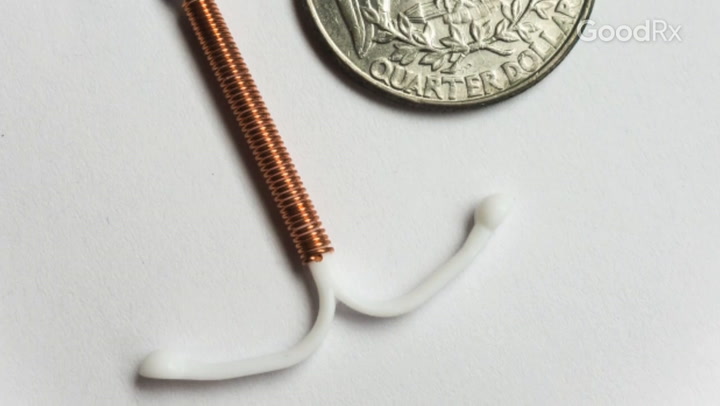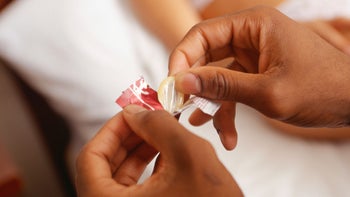
Vibrators, Kegel Exercisers, and Vaginal Dilators: Can Devices Really Help Improve Your Sex Life?
Key takeaways:
Sexual wellness devices are tools that make sex more comfortable and pleasurable for many women. Examples of sex devices include vibrators, Kegel exercisers, and vaginal dilators.
Sexual wellness devices can help with arousal and orgasm, and can make penetration less painful. Some sex devices can also improve your pelvic health.
Many sexual wellness devices are safe to use on your own. But some sex devices, like vaginal dilators and laser therapy, should only be used under medical guidance.
Table of contents

Talking about sexual wellness devices, such as vibrators and Kegel weights, isn’t something people often do. But in reality, these devices are common. In fact, in the United States more than half of women ages 18 to 60 years have used a vibrator.
Whether you’re already familiar with these tools or just curious, you might be wondering: Can they really make a difference in your sex life? For many people, they’re worth a try. Sexual wellness devices can not only be enjoyable and safe to use, but they also often make sex more comfortable, pleasurable, and satisfying.
What are sexual wellness devices?
Sexual wellness devices are more than just sex toys. They’re tools that can help with:
Physical arousal
Comfort
Enjoyment during sex
Examples include:
Vibrators
Vaginal dilators
Kegel weights and exercisers
Clitoral vacuum stimulators
Laser therapy devices
Some of these devices work by adding fun and excitement to your intimate experiences, or by stimulating your genitals. Others improve the health of the pelvic area. And some can make sex more comfortable, and less painful.
Read more like this
Explore these related articles, suggested for readers like you.
How do sexual wellness devices help with sex?
Sexual wellness devices can help with sex in different ways. It all depends on what device you use, and how you use it.
For many people, sexual wellness devices can:
Increase fun and enjoyment during sex
Increase pelvic muscle tone
Improve blood flow to your genitals
Support healthy tissues in your vagina
Increase pleasure and sensation
Help you have an orgasm
Some wellness devices can also help with muscle problems that could be making sex (especially penetration) difficult or painful for you.
Let’s take a closer look at some of the different types of sexual wellness devices.
Vibrators
Vibrators are a type of sex toy used to stimulate your genitals and other parts of your body. Research has shown that using a vibrator can have a positive effect on sexual function — with rarely any downside.
There’s evidence that using a vibrator can have many benefits, including:
Increased sex drive (libido)
Increased physical arousal
Increased lubrication (wetness)
More frequent orgasms
Increased blood flow to your genitals
Increased sensation in your genitals
A better understanding of which sexual activities you enjoy
Vibrators come in all shapes and sizes. They can be worn on the fingertips, held in your hand, or strapped to your body. There are even vibrators that are hands-free, as well as vibrators that are designed to be used during vaginal penetration. Products like the Wildflower Enby and Maude Drop are gender-neutral vibrators that can be used by anyone.
Eros therapy device
The Eros is an FDA-approved sexual wellness device. It uses a small vibrating vacuum to increase blood flow to your clitoris) — mimicking your body’s natural sexual arousal. It’s similar to (but smaller than) the vacuum pumps used to help with penis erections.
The Eros is approved specifically for women who have:
Problems with a very low libido (hypoactive sexual desire disorder)
Problems getting physically aroused (female arousal disorder)
Just like a vibrator, the Eros can also increase sensation, improve sexual satisfaction, and help with orgasm. In one small clinical study of 25 women, the Eros had some benefit for almost all of the participants. In another small study of 15 women, the Eros helped treat sexual problems caused by radiation therapy for cervical cancer.
One downside: The Eros is expensive, and probably won’t be covered by your health insurance. Even though the Eros doesn’t seem to have any side effects, experts aren’t convinced that it works any better than other over-the-counter (OTC) devices, like vibrators or clitoris pumps.
Kegel exercisers
According to the National Institutes of Health, about 25% of women have problems with their pelvic floor muscles — especially muscle weakness. Kegel exercises can strengthen and tone your pelvic floor muscles and may actually be more effective than any other type of exercise for this purpose.
Kegel exercises can improve sexual function by:
Teaching you how to control your vaginal muscles
Encouraging healthy blood flow to your genitals
Increasing lubrication (wetness)
Making it easier to have an orgasm
Helping you to have longer and stronger orgasms
Reducing urine and stool (pee and poo) leakage
You can do Kegel exercises without any equipment, but there are several types of devices that can help you with your workout. These devices can refine your technique, encourage you to meet your goals, and — in some cases — even design and track a personal Kegel exercise program for you.
Different kinds of Kegel exercise devices are listed below. No matter which type you choose, make sure to look for a Kegel exerciser that’s made with body-safe materials.
In particular, steer clear of jade eggs: There’s no evidence that these were used historically for sexual wellness. Jade eggs also have porous, hard-to-clean surfaces that could put you at risk for a serious infection.
Kegel weights
These are smooth weights that are placed inside your vagina. You squeeze your pelvic muscles to “lift” the weight, which may tone your pelvic floor muscles. Some weights come in sets of increasing heaviness, or they might have strings or handles that you can pull to increase resistance. Examples include:
Research tells us that you get the same results from doing Kegels with or without vaginal weights. But in a large review of more than 1,800 women, doing Kegels with vaginal weights was better than no treatment at all — so if weights encourage you to stay on track with your Kegels, they could be worth considering.
Electrostimulating Kegel exercisers
These devices use small electrical currents to automatically contract your pelvic floor muscles. This can be a great option for people who have a hard time squeezing their pelvic floor muscles on their own. Examples include:
While many of these devices are approved by the FDA for treating incontinence, they’re not officially approved for sexual function. But if you have problems with both urine leaks and sexual function, this could be an especially good option for you.
Talk with your healthcare provider about whether an electrostimulating device is the right fit. Some devices may require a prescription and could even be eligible for insurance coverage.
Kegel ‘smart’ exercisers
There are also many “smart” exercisers that use technology to help you meet your Kegel goals. Like vaginal weights, smart exercisers are put inside your vagina — but they come with built-in training programs, either within the device itself or that you can access through a phone or app. Examples include:
Most of these exercisers use new technology, so there’s not a lot of research yet on how well they work. But in one small study, women who used the Vibrance device for 16 weeks had a significant improvement in pelvic muscle strength. And in the U.K., the National Health Service not only recommends doing pelvic floor exercises to have better sex, but is also even giving some women a free Elvie Trainer.
Just like with any exercise program, it’s important to talk with a healthcare provider before starting Kegels — especially if you’re having pain. In some cases (like if you have vaginismus), Kegels can actually make your symptoms worse. Getting an evaluation from an OB-GYN or physical therapist can help you feel confident that Kegels are the right treatment for your symptoms.
Vaginal dilators (trainers)
Vaginal dilators are tube-shaped medical devices that are inserted into your vagina. They come in a range of sizes and are often used two or three times per week. Many people start with a small dilator and gradually work up to larger sizes over time.
Vaginal dilatation can help in the following situations:
Sex-related fear or anxiety
Chronic genital pain (vulvodynia or vulvar vestibulitis)
Vaginal muscle spasms (vaginismus)
Pain during sex (dyspareunia)
Sexual side effects caused by pelvic radiation therapy
Sexual problems related to menopause
Undeveloped vagina (vaginal agenesis)
Recovery after (bottom) gender confirmation surgery
In these situations, vaginal dilators can:
Train your pelvic muscles to relax during penetration
Encourage vaginal depth and width
Stretch out tight tissues and muscles
Improve comfort during penetration
Vaginal dilators are available without a prescription, but they should be used under professional guidance for best results — especially because they can be hard to use correctly. They’re often paired with counseling or mindfulness exercises.
Laser therapy
Laser light therapy uses a special type of concentrated light in the vagina. Research is still needed, but there's some evidence that laser therapy may help with sexual wellness, especially in menopausal women.
It’s possible to purchase a laser therapy device without a prescription, but these should be used only under the guidance of a trained healthcare professional. In fact, the FDA has issued a warning about laser therapy, as it can cause major complications — like burns, scarring, and chronic pain. If you’re considering vaginal laser therapy, make sure to work with a licensed healthcare professional to understand the risks and benefits of this type of treatment before you proceed.
Tips for using sexual wellness devices
Some people enjoy using sexual wellness devices with a partner. Others prefer to use them alone. And even though they’re available without a prescription, some sexual wellness devices (like vaginal dilators or lasers) should be used under the guidance of a trained health professional.
We also have a couple of notes on safety. When using sexual wellness devices, it’s important to keep them clean — especially if you’re sharing them with a partner. You should also steer clear of any product that’s labeled “for novelty only” (or something similar) or that contains phthalates or other hazardous chemicals.
Your best bet? Look for products that are either approved by the FDA or made with body-safe material like:
Silicone
Glass
Stainless steel
Latex
Lucite
Phthalate-free plastic
The bottom line
When it comes to sexual wellness, it’s all about finding what feels authentic, comfortable, and enjoyable for you. But there’s evidence that using sexual wellness devices can help some women maintain pelvic health, and enjoy sex and orgasm. If you’re looking to make changes in your sex life, it’s possible that using a sexual wellness device could help you achieve your goals.
If you’re having significant troubles with sex, like pain, discomfort, or trouble with orgasm, it’s always worth talking it over with your healthcare professional. They can help you understand which sexual wellness devices might be the best fit for your unique needs, and let you know about any additional strategies that could help.
Why trust our experts?


References
Aetna. (n.d.). Female sexual dysfunction (FSD).
American Cancer Society. (2020). How radiation therapy can affect the sex life of females with cancer.
American Society of Plastic Surgeons. (n.d.). Gender affirmation surgeries.
Familydoctor.org. (2022). Dyspareunia.
Gunter, J., et al. (2019). Vaginal jade eggs: Ancient Chinese practice or modern marketing myth? Female Pelvic Medicine and Reconstructive Surgery.
Gunter, J. (2019). Weight lifting to fight incontinence. The New York Times.
Herbenick, D., et al. (2009). Prevalence and characteristics of vibrator use by women in the United States: Results from a nationally representative study. The Journal of Sexual Medicine.
Herbison, G., et al. (2013). Vaginal weights for training the pelvic floor muscles to treat urinary incontinence in women. Cochrane Library.
Indiana University. (2009). Vibrator use common, linked to sexual health. ScienceDaily.
International Society for Sexual Medicine. (n.d.). What are Kegel exercises and what sexual health benefits might they have?
International Society for Sexual Medicine. (n.d.). What are the benefits of vibrators for sexual health?
International Society for Sexual Medicine. (n.d.). What is vaginismus?
Jacomo, R. H., et al. (2020). Exercise regimens other than pelvic floor muscle training cannot increase pelvic muscle strength-a systematic review. Journal of Bodywork and Movement Therapies.
Josefson, D. (2000). FDA approves device for female sexual dysfunction. British Medical Journal.
Judge, D. E. (2019). A clinician's guide to sexual devices: What we didn't learn in school. New England Journal of Medicine Watch, Women’s Health.
Lee, Y. (2018) Patients’ perception and adherence to vaginal dilator therapy: A systematic review and synthesis employing symbolic interactionism. Patient Preference and Adherence.
Liu, M., et al. (2021). Vaginal dilators: Issues and answers. Sexual Medicine Reviews.
Memorial Sloan Kettering Cancer Center. (2022). How to use a vaginal dilator.
National Health Service. (2023). Are sex toys safe?
National Health Service. (2023). What are pelvic floor exercises?
National Institutes of Health. (2008). Roughly one quarter of U.S. women affected by pelvic floor disorders.
National Institute on Aging. (2022). Urinary incontinence in older adults.
National Vulvodynia Association. (n.d.). What is vulvodynia?
North American Menopause Society. (n.d.). Effective treatments for sexual problems.
Ong, T. A., et al. (2015). Using the vibrance Kegel device with pelvic floor muscle exercise for stress urinary incontinence: A randomized controlled pilot study. Urology.
Planned Parenthood. (n.d.). Sex toys.
Planned Parenthood. (2020). Where is the clitoris?
Queen, C. (n.d.). Clit pumps: The throbbing truth about your throbbing member. Good Vibes.
Rojas, K. E. (2022). The FDA needs to take another look at laser-based ‘vaginal rejuvenation’. Stat News.
Rullo, J. E., et al. (2020). Genital vibration for sexual function and enhancement: A review of evidence. Sex and Relationship Therapy.
Sexual Medicine Society of North America. (n.d.). Hypoactive sexual desire disorder.
Stewart, E. (2003). Treatment options for vulvar vestibulitis. Contemporary OB/GYN.
Tadir, Y., et al. (2018). Light and energy based therapeutics for genitourinary syndrome of menopause: Consensus and controversies. Lasers In Surgery and Medicine.
Te Brummelstroete, G. H., et al. (2019). Scientific evidence for pelvic floor devices presented at conferences: An overview. Neurourology and Urodynamics.
Urology Care Foundation. (n.d.). What is vaginal agenesis?
U.S. Food and Drug Administration. (2018). Statement from FDA Commissioner Scott Gottlieb, M.D., on efforts to safeguard women’s health from deceptive health claims and significant risks related to devices marketed for use in medical procedures for “vaginal rejuvenation”.





























